Surgical Concept
The tension and elasticity of facial skin, which has been continuously explored and refined, is an important issue in cosmetics. Along with the unceasing progress in surgical science and technology, the overall concept of facelifts has developed from the traditional horizontal superficial “lift” to a longitudinal vertical “lift” accommodating esthetically good and long-lasting effects. Other advances include “short scars,” “minimal invasiveness,” “multiple layers,” and “regional units,” which offer patients a more natural effect and quick recovery. As more options become available and more devices can be obtained, modern facelift is no longer a prerogative demand in the elderly. An increasing number of mature as well as young people have begun to consider facelift as a shortcut to sustain skin tension or to delay aging. Moreover, it has become an unspoken secret of numerous people who remain young forever.
Patients usually have an inexplicable fear of traditional facelift because the procedure involves the face; thus, they often consider facelift as the last treatment resort. However, they often overlook the potential effects of skin age on postoperative recovery and the longevity of results and miss the potential of rapid rejuvenation offered by facelift. Many patients have incorrect information about these so-called “rejuvenation” treatments. They try undertested or prematurely developed light therapies and injection treatments, while ignoring possible risks and uncertainties. This is particularly due to the prevalence of mini-invasive procedures and injections, or laser and light therapy with dazzling sugar-coated advertisements. Furthermore, poor results and unexpected injuries are a risk when undergoing a procedure by a non-specialized physician, where often the results are quite regrettable. Based on his numerous years of experience in skin treatment, Dr. Chuang has estimated that more than 80% of patients previously exposed to esthetic medical treatment found the final results to be unsatisfactory or that they desired further improvement. Approximately 60% of them had to undergo facelift to resolve facial sagging. Esthetic medicine features “formulaic” treatments via devices or injections and fails to “differentiate” patients according to their age, skin conditions, and other influential factors. Physicians proceed with treatment depending only on treatment parameters provided by manufacturers or according to their own experience; thus, the results would definitely not meet the requirements of patients with different skin conditions and ages. In contrast, facelift can be performed using various methods depending on patients’ skin elasticity and is conducted by a professional plastic surgeon who can make adjustments and revisions in light of patients’ skin elasticity during the operation. Therefore, a facelift presents unrivaled results compared with those by micro-invasive or non-surgical therapy.
Facelifts are conducted in the deep layer of the skin to completely improve skin laxity or sagging from the structural plane, with the surgical results lasting from 3–5 years to over 10 years. This not only produces rapid results but also alleviates the concern about the potential of persistent skin sagging in a short time after the surgery. Furthermore, facelift saves one the budget and trouble of regular skin care or repetitive injections, which enables patients to enjoy a stable and long-term result.
Many patients are concerned about the safety of a facelift. However, there are now new surgical concepts and techniques to be applied. Presently Dr. Chuang provides two major trends in facelifts. One is a kind of distant facelift, where the incision is hidden at a site such as the scalp and the procedure is performed using an endoscope. It requires distal skin dissection and elevation, which reduces the possibility of nerve and blood vessel injury and leaves no visible incision scars on the face. The other utilizes temporary biodegradable fixation devices (such as Endotine forehead, midface, or Endotine Ribbon implants) or a new design facelift thread (such as Quills or Silhouette suture) to achieve solid fixation of the skin to deeper tissues. This not only effectively enhances the tension and stability of a facelift but also provides a longer result. This is a radical subversion over the traditional concept that the skin should be pulled tight as much as possible to achieve prolonged effects. In addition, Dr. Chuang is specialized in regional facelifts at local sites such as a lift of the brow end, midface, or jaw line, which relies on the tension and fixation of the superficial fascia to achieve the lifting result. This procedure, which boasts of a shorter recovery period and more efficacy than non-surgical Ulthera or Thermage therapy, or even an embedding thread lift, is suitable for young patients and gives patients quick results and a natural appearance.
Dr. Chuang considers that a “facelift” aims to “tighten” and “lift” and will simultaneously address facial skin “laxity” and “sagging.” This illustrates the primary difference between real surgery and micro-invasive or non-surgical procedure as well as its significance. Varied and diverse modern facelifts have revolutionized the traditional concepts. This allows patients to determine the necessity of operations from “requirements” and “objectives” and no longer by the “aging” stereotype. Regardless of which of the two common methods of facelift is selected, surgical safety is guaranteed as long as the aforementioned two objectives are met and newer advanced devices are utilized. Patients will comfortably enjoy an instant, obvious improvement; furthermore, they will have a stable, long-lasting rejuvenated appearance.
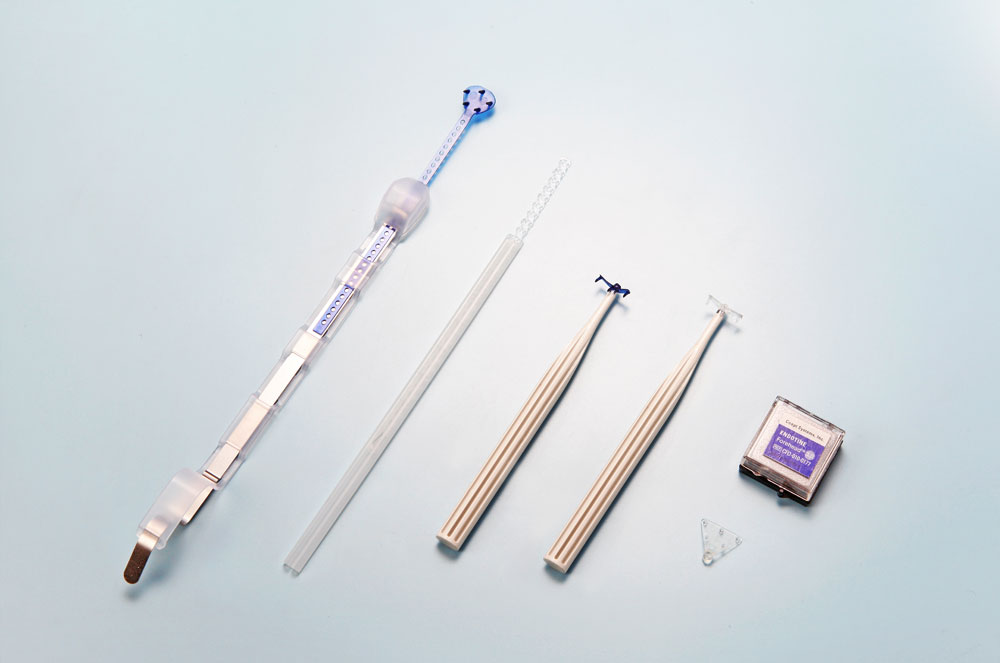
Various types and lengths of Endotine devices provide temporal but strong fixation in facelift surgery.
Surgical Characteristics
Endoscopic facelift
In recent years, the endoscope system has been not only successfully used for breast augmentation but also widely applied for forehead and midface lifts. It ensures the stability and safety of surgery and reduces unwanted traumas to peripheral tissues, which effectively curtails recovery time. Wish clinic is equipped with the high-resolution Stryker 1288 endoscope imaging system, which is equivalent to the systems used by teaching hospitals. With a very high resolution of real-time images, it can clearly visualize nerves and blood vessels under the skin, making it possible to avoid intraoperative hemorrhage, nerve injury, or other potential complications. The probe of the endoscope used for facelift is shorter and more exquisite than that used for breast augmentation, which enables the surgeon to perform flexible and delicate work within the limited range of vision field. Using the endoscope, the surgeon needs to make only 2–5 small incisions on the scalp to complete a quick and accurate surgery. In addition to the advanced surgical device, there is a revolutionary method of refined skin fixation using a US “Endotine” fixation implant. Various versions of the biodegradable implants are available and can be used for different purposes. They can be extensively used in the forehead, midface, or even lower face (jaw line) lift to produce a reliable suspension of saggy skin and encourage adherence of the tissue, which is more secure and longer lasting than conventional thread embedding or bone peg fixation. Currently, Dr. Chuang utilizes Endotine implants in all his endoscopic forehead or midface lifts to produce long-term and stable effects, which sustain the results of an endoscopic lift for at least 6–8 years.
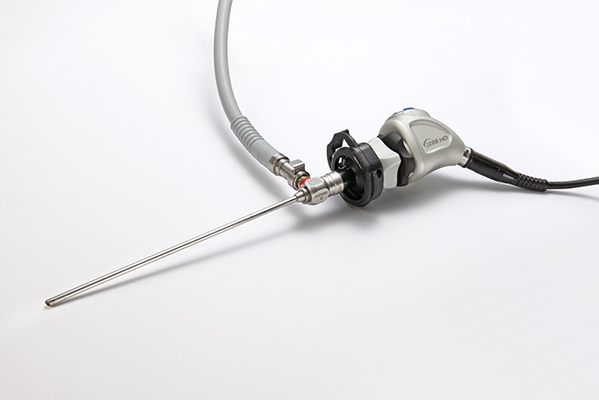
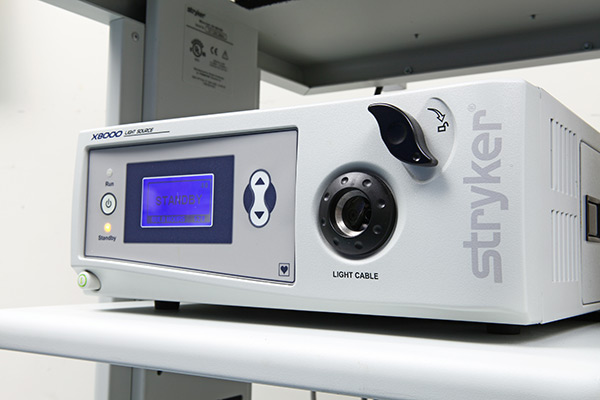
Dr. Chuang uses Stryker endoscopic system to perform forehead and midface lift, combining with application of Endotine Ribbon fixation to ensure safety and efficiency.
Regional midface lift
Regional midface or MACS lift, also called short scar lift, is superficial and minimally invasive. It is indicated for patients in their 30s or 40s and integrates the effects of treatment and prevention. Some facial areas with relatively obvious sagging are locally elevated. Limited dissection is conducted only between the subcutaneous fat and superficial fascia layers. Then, the superficial fascia, which is partially resected, is elevated and temporally fixed to the deep fascia. Therefore, it has the advantages of a smaller surgical area and fewer traumas than a conventional deep layer or whole facelift and can deliver tight and natural effects in the shortest recovery period. Moreover, as surgical incisions are relatively small and concealed in the sideburn or temporal scalp, less scars are visible on the face, which makes it suitable for young working patients. Dr. Chuang has widely applied this method to lift facial areas prone to premature sagging such as the eyebrow ends, midface, and even jaw line. Dr. Chuang also incorporates Endotine Ribbon implants or Quill thread to attain longer and more secure results.
Link: Quill thread
Deep-plane SMAS facelift
Deep-plane SMAS facelift is refined from traditional facelift and produces the longest-lasting effects. It may be considered for patients with severe skin laxity or sagging or those who have been determined to be suitable for achieving prolonged improvement through endoscopic surgery. In Dr. Chuang’s procedure, a linear incision is made that curves from the scalp to around the front of the ear and behind it. Assisted by an LED headlight system, the skin, superficial fascia, and deeper fascia are separated layer by layer, ending near the nasolabial folds, and the saggy superficial fascia is removed and fastened to the harder deep fascia with strong lifting sutures. The purpose of this surgery is to elevate the cheek and jawline in a 45° posterior–superior direction with proper tension of sutures. This surgery covers a relatively extensive area at a deep level, which is not only combined with a neck lift by extending it downward but also with the excision and suturing of the superficial fascia and surface skin. Therefore, it produces the most optimal and longest-lasting effects among various facelifts, lasting on average for more than 8–10 years. Thus, deep-plane SMAS facelift should be the primary surgical option for patients with severe facial aging and neck sagging.
Application of tissue adhesive
Tissue adhesive, also called “human fibrin glue,” is a high-concentration compound of human serum fibrinogen and human thrombin, whose ingredients are quite similar to those of autologous serum protein. Therefore, it is associated with a shorter coagulation time and faster skin wound approximation. It also prevents hemorrhages and kills pain. As a highly biocompatible material, the tissue adhesive is metabolized by the body within approximately 10–14 days. It is currently widely used in numerous traumatic plastic surgeries, skin flap reconstruction, facial or tummy tuck, eyelid cosmetic surgery, nose augmentation, and bone reduction. Concerning its method of usage, the two ingredients are premixed and evenly sprayed on the inferior skin layer before wound closure; then, pressure is applied at the surgical site for 3–5 min to achieve instant skin adhesion. It is very safe and convenient and relieves patients from the pain and suffering caused by an embedded blood drainage catheter.
The significance of tissue adhesive in facelift lies in its temporary and compulsive adhesion and the homeostasis of human skin by promoting the separated skin to rapidly adhere to deeper tissues and lowering the incidence of subcutaneous cavity and hematoma. Therefore, it accelerates wound healing, shortens the swelling period, reduces the recovery time by ≥50%, and remarkably reduces blood stasis at the affected site. Dr. Chuang now offers these advanced subcutaneous adhesives to patients requiring various facial surgeries to reduce pain, mitigate swelling or blood stasis, and effectively curtail the recovery period.
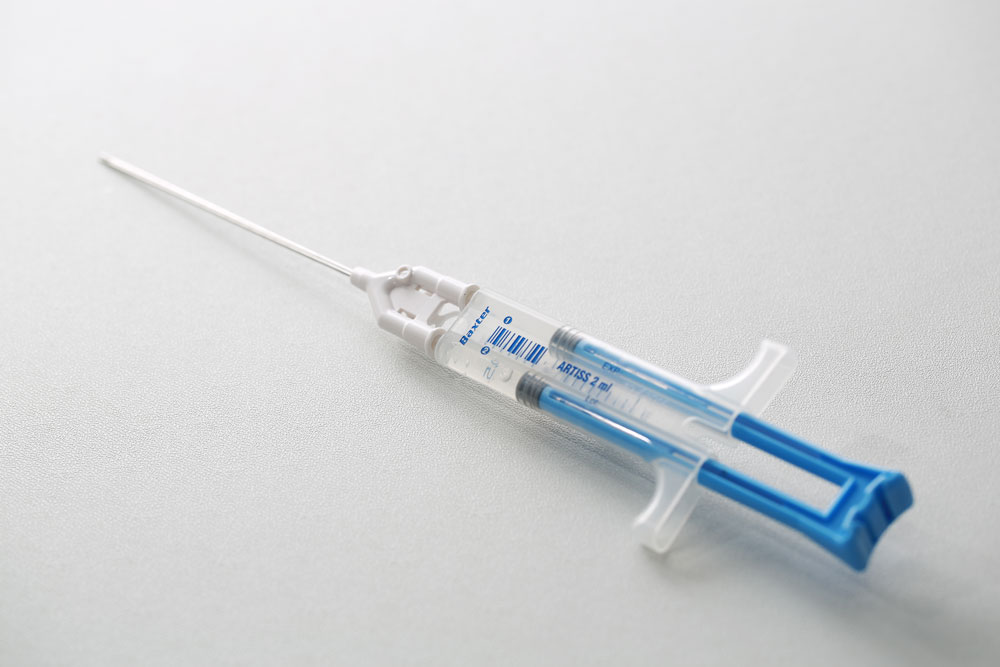
Tissue adhesive can effectively lower risks of complications from facelift surgeries.
Combined fat grafting and facelift
In numerous patients, aging of the face is ascribed not only to skin laxity and sagging but also to the loss of adipose tissues and collagens, which occurs even before the skin slacks. Therefore, when performing facelift on an aged face, facial sagging should also be resolved to restore youthful skin tension and elasticity. Commonly, premature fat loss is first observed in the corners of the mouth (marionette fold), temples, and both cheeks. If only autologous fat grafting is conducted to address sagging, it may aggravate skin laxity and create slacks in the future. Therefore, to comprehensively manage this, various facelifts to tighten skin elasticity and lift the sagging cheeks are performed. Then, considering the range and severity of sagging in the remaining areas, appropriate mixed fat growth factors are drawn from the abdomen or medial thigh and injected in the affected area. Thus, skin thickness and fullness may be increased, and facelift effects may be sustained. Moreover, for some patients with thick skin but obvious sagging in the nasolabial folds, subcutaneous dissection and fold separation may first be conducted with a nasolabial wire scalpel before fat grafting to notably increase patients’ satisfaction with nasolabial fold treatment.
Thread lift
Barbed thread lift has been used in facelifts for over 20 years. However, because of its hardness or inability to absorb, the earlier versions of singled-stranded APTOS or WAPTOS are likely to cause skin reactions, nodules, sinking, puckering, and other complications and are not approved by the US Food and Drug Administration (FDA). Therefore, there are several concerns about surgical safety. Nevertheless, the surgery has undergone several modifications, and due to continued improvements in suture thread materials, particularly in safety, FDA-approved absorbable Silhouette sutures are available. The special design of small biodegradable cones on the thread provides very tight adhesion and suspension over loose tissues. The material of cones, poly L-lactic acid, will also stimulate collagens to regenerate. It can be independently used for limited thread lift or regional fine adjustment of the eyebrows, nasolabial folds, corner of the mouth, or jaw line, offering an alternative for patients with mild aging who are unwilling to accept facelifts. In addition, it can be used in secondary SMAS or MACS lift surgeries as a fascial fixation thread to enhance the strength and tenacity of the lift. Therefore, as long as a proper surgical site and method are adopted, these threads can provide a certain degree of improvement for patients. Nevertheless, Dr. Chuang wants to remind patients that surgeries that use these threads run deeper and are more complex than the common so-called 3D embedding and are not suitable for all patients. Therefore, each individual’s skin conditions and indications are carefully evaluated before surgery to make the final decision.
Link: Silhouette sutures
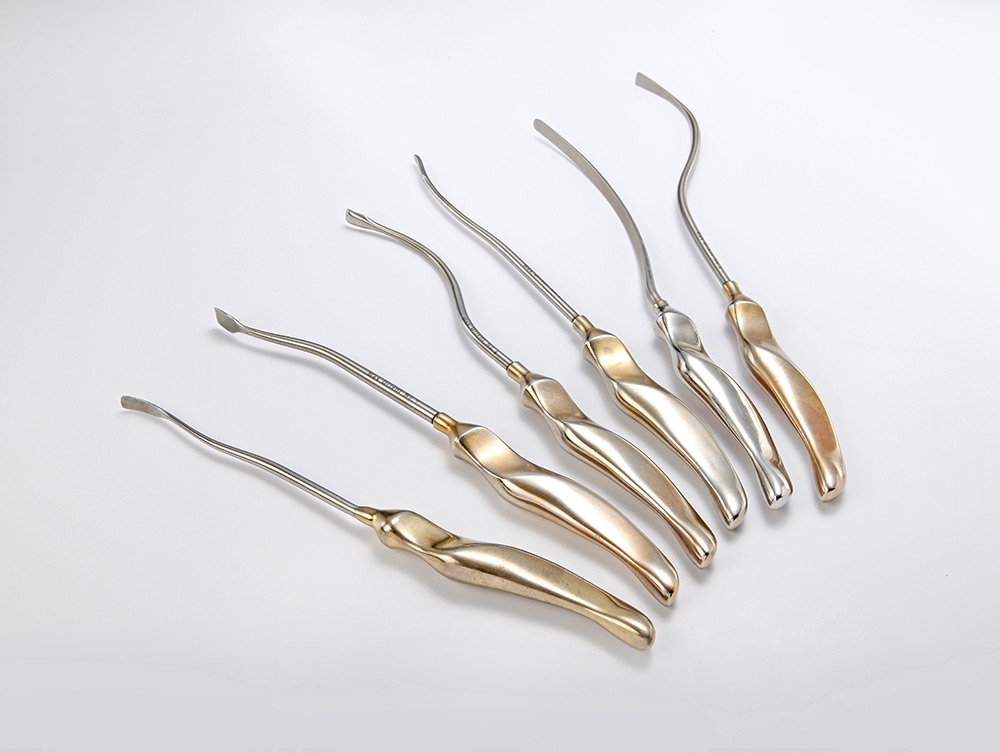
Application of specific designed dissection devices make facelift surgeries more effective and safe.
